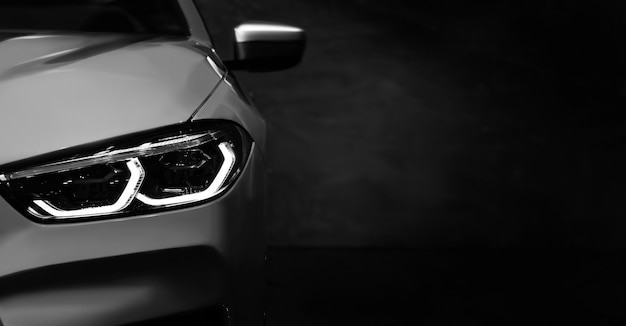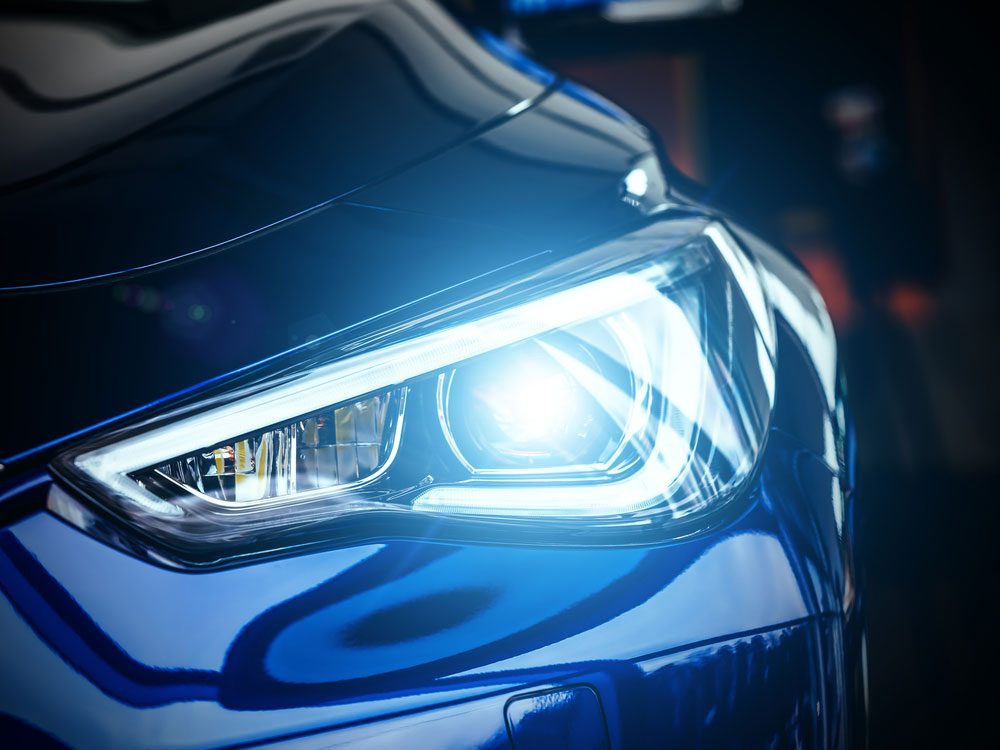What Does Hikari Led Headlight Do?
Table of ContentsFacts About Hikari Led Headlight UncoveredLittle Known Questions About Hikari Led Headlight.The Ultimate Guide To Hikari Led Headlight

These are physically and electrically interchangeable with H4 bulbs - hikari led headlight. Comparable optical methods are used, however with different reflector or lens optics to produce a United States beam pattern instead of a European one. Each system has its advantages and disadvantages. The American system traditionally permitted a greater general quantity of light within the low beam, because the entire reflector and lens location is used, however at the very same time, the American system has actually traditionally used much less control over upward light that triggers glare, and for that reason has been largely turned down outside the United States.
The high beam is usually a rough copy of the low beam, shifted slightly upward and leftward. The European system traditionally produced low beams consisting of less general light, because just 60% of the reflector's surface area is utilized to create the low beam. However, low beam focus and glare control are much easier to achieve.
Complex-reflector technology in combination with brand-new bulb designs such as H13 is making it possible for the production of European-type low and high beam patterns without making use of a Graves Guard, while the 1992 US approval of the H4 bulb has made typically European 60%/ 40% optical location departments for low and high beam common in the United States - hikari led headlight.
Dual-beam HID headlamps utilizing reflector technology have actually been made using adjustments of both techniques. In this system a filament is located at one focus of an ellipsoidal reflector and has a condenser lens at the front of the light. A shade lies at the image plane, in between the reflector and lens, and the projection of the top edge of this useful content shade offers the low-beam cutoff.
The shade might be decreased by a solenoid activated pivot to provide low beam, and removed from the light course for high beam. Such optics are referred to as BiXenon or BiHalogen projectors. If the cutoff shade is repaired in the light course, separate high-beam lights are required. The condenser lens may have slight fresnel rings check this site out or other surface treatments to reduce cutoff sharpness.
Some Known Incorrect Statements About Hikari Led Headlight
Hella introduced ellipsoidal optics for acetylene headlamps in 1911, however following the electrification of vehicle lighting, this optical technique wasn't used for many decades. The first contemporary polyellipsoidal (projector) automotive light was the Super-Lite, an auxiliary headlamp produced in a joint endeavor in between Chrysler Corporation and Sylvania and optionally installed in 1969 and 1970 full-size Dodge automobiles.
Projector main headlamps initially appeared in 1981 on the Audi Quartz, the Quattro-based principle vehicle designed by Pininfarina for Geneva Automobile Hair Salon. [] Established basically all at once in Germany by Hella and Bosch and in France by Cibi, the projector low beam allowed precise beam focus and a much smaller-diameter optical plan, though a much deeper one, for any provided beam output (hikari led headlight).
The primary drawback of this kind of headlamp is the requirement to accommodate the physical depth of the assembly, which might extend far back into the engine compartment. The very first electrical headlamp source of light was the tungsten filament, operating in a vacuum or inert-gas environment inside the headlamp bulb or sealed beam.

Tungsten-halogen technology (also called "quartz-halogen", "quartz-iodine", "iodine cycle", etc.) increases the effective luminous effectiveness of a tungsten filament: when operating at a greater filament temperature which leads to more lumens output per watt input, a tungsten-halogen light has a much longer brightness lifetime than comparable filaments operating without the halogen regrowth cycle.
European-designed halogen headlamp lights are normally set up to provide more light at the very same power usage as their lower-output plain tungsten counterparts. By contrast, numerous US-based styles are set up to lower or lessen the power intake while keeping light output above the legal minimum requirements; some United States tungsten-halogen headlamp light sources produce less initial light than their non-halogen equivalents.
There was an improvement in seeing distance Visit Your URL with United States halogen high beams, which were allowed for the very first time to produce 150,000 candela (cd) per automobile, double the non-halogen limit of 75,000 cd but still well shy of the worldwide European limitation of 225,000 cd. After changeable halogen bulbs were permitted in US headlamps in 1983, development of US bulbs continued to favor long bulb life and low power usage, while European styles continued to prioritise optical precision and maximum output.
All about Hikari Led Headlight
It was introduced in 1962 by a consortium of European bulb and headlamp makers. This bulb has a single axial filament that consumes 55 watts at 12. 0 volts, and produces 1550 lumens 15% when operated at 13. 2 V. H2 (55 W @ 12. 0 V, 1820 lm @ 13.